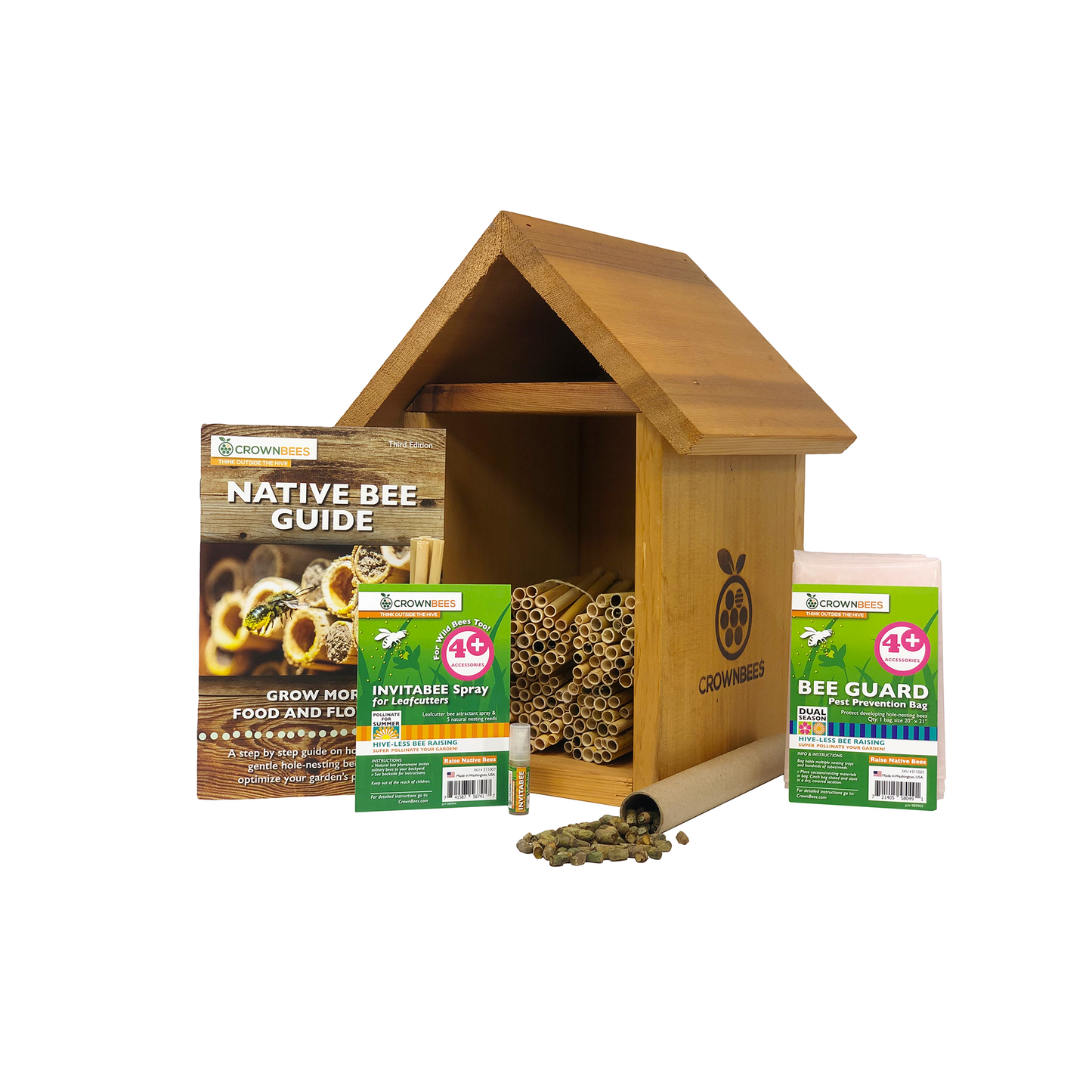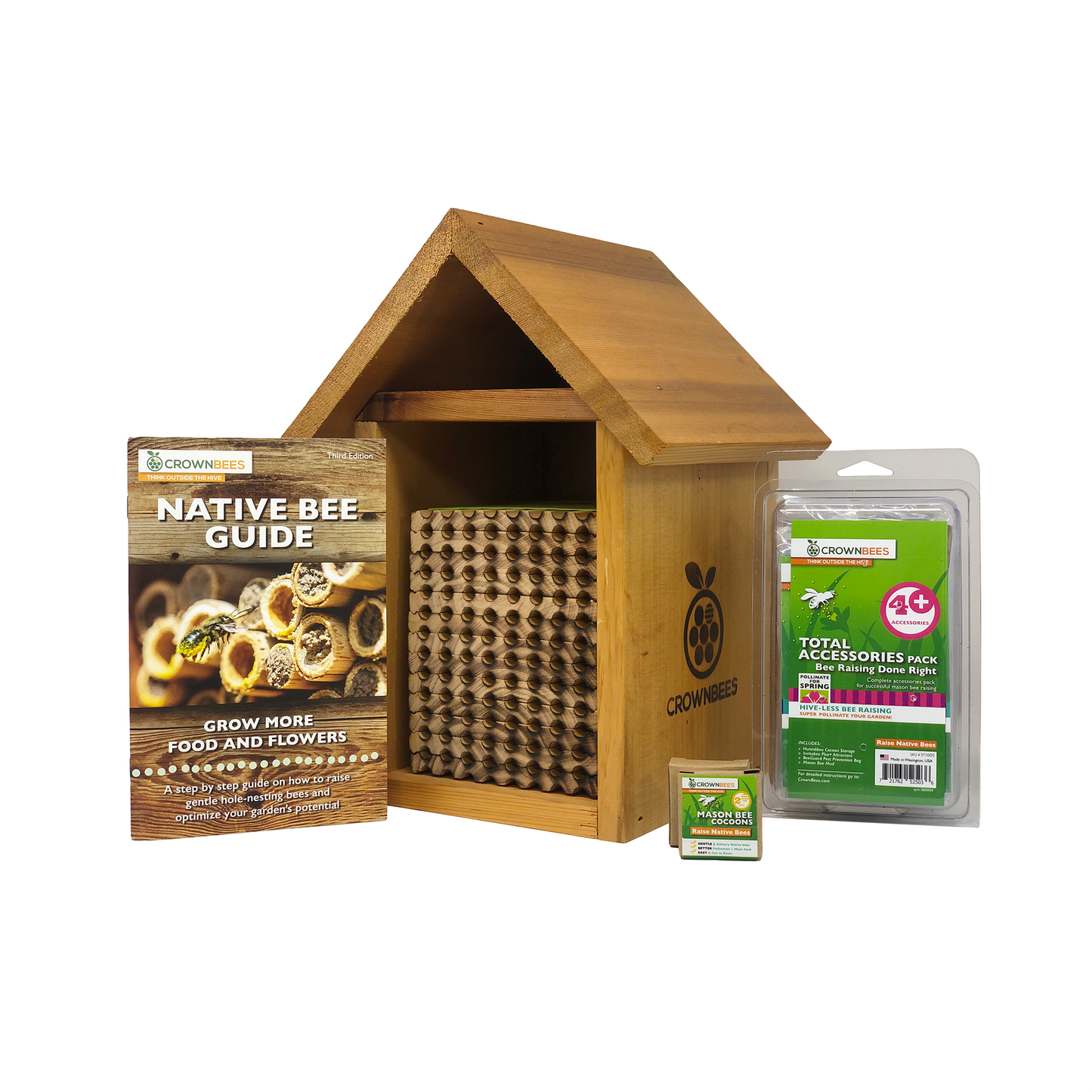
Leafcutter bees hibernate as dormant, mature larvae inside their leafy cocoons. The development time from larvae to adults is temperature-dependent. The warmer the temps, the faster bees develop into adults. We call this process incubation.
If you purchase leafcutter bee cocoons from Crown Bees, we start the incubation process for you, so the bees arrive at your doorstep ready to emerge. Learn more by reading Picking Your Leafcutter Bee Ship Date and Leafcutter Bees by Mail articles.
If you are incubating your own harvested leafcutter cocoons, plan to time their emergence with your summer weather and open blooms.
Need a little help remembering when you should incubate cocoons? Sign up for BeeMail and we'll send timely information, reminders, and tips to your email to help guide you along your solitary bee-raising journey!
To incubate, place your bag full of harvested cocoons in a dark, warm location, like an unconditioned garage, water heater room, or protected outdoor area.
Development temperature-dependent. The warmer the temps, the faster bees develop into adults:
- At 84°F/30°C, adults emerge after about 20 days.
- At 70°F/21°C, adults emerge after about 42 days.
Pro Tip: Intact cocoons can’t regulate their temperatures above 90°F/32°C, if your storage area gets above 90°F/32°C during the incubation period, bring the cocoons to a cooler location, like indoors and release adult bees (in the early morning) as they emerge until the weather cools.
Your bee house may have attracted some native leafcutter bees last season. Some native species of leafcutter bees have shorter development cycles and will emerge early, so it's a good idea to check the bag periodically. Release any early emergers near your bee house.
Once adult leafcutter bees start to emerge, you can release cocoons by placing leafcutter bee cocoons into a cocoon hatchery or similar container and placing the container in your bee house.
Important: Pteromalus parasitic wasps (see image below) emerge after about 9-14 days and attack developing leafcutter cocoons. Remember to check periodically for any parasitic wasps. Kill any parasitic wasps you find in the bag.
Pro Tip: To ensure your yard and garden has enough leaves for the female leafcutter bees to build their leafy cocoons - plant peas, beans, or strawberries around the same time you start incubating leafcutter cocoons.



